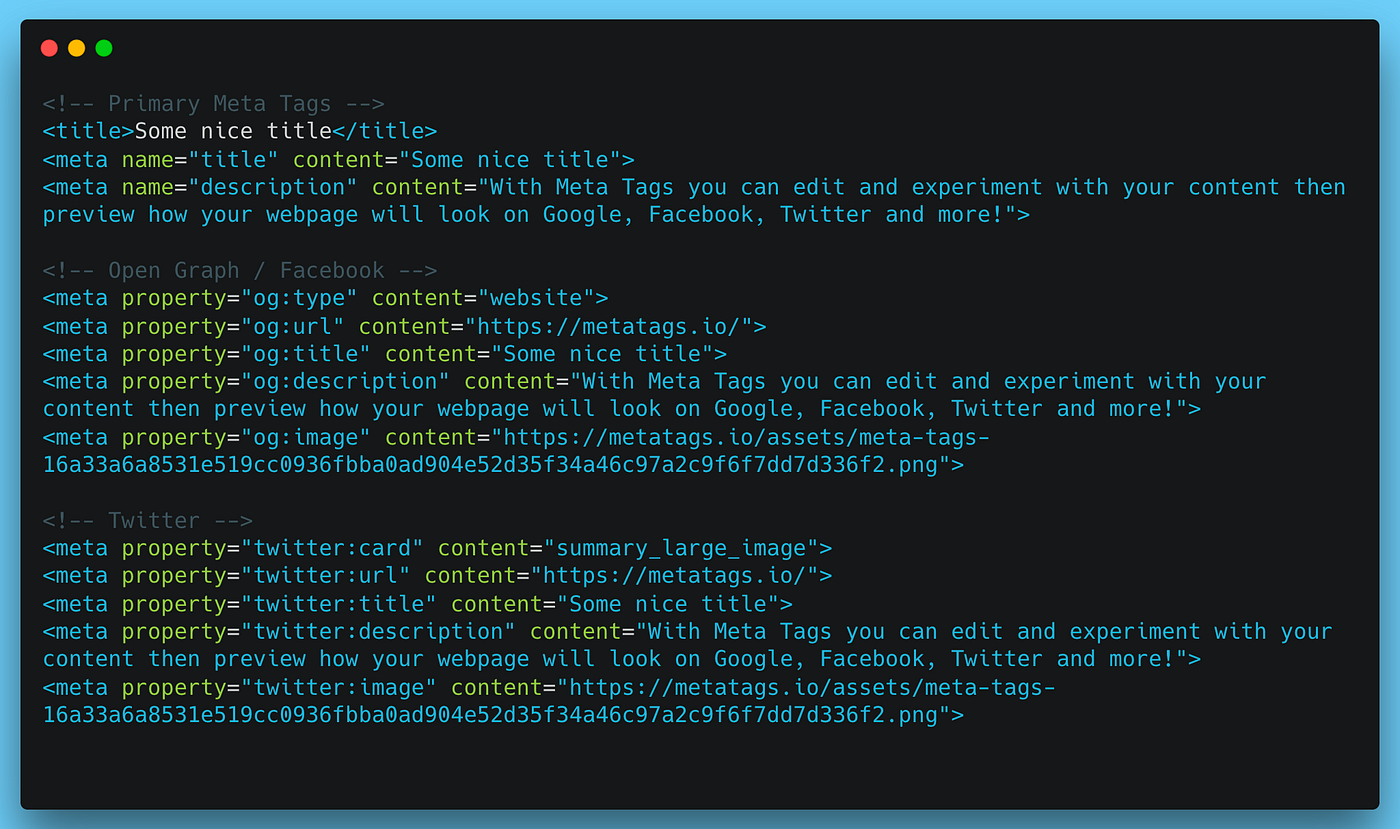
In the vast and competitive realm of online visibility, the art and science of Search Engine Optimization(SEO) stand as the linchpin for success. As digital landscapes continually evolve, so must our strategies for enhancing organic traffic. This article delves into the world of SEO experiments to grow your organic traffic performance, unraveling the potential they hold to elevate your website's performance. From refining keywords to conducting technical audits and embracing emerging trends, these experiments offer a roadmap to not just survive but thrive in the ever-changing landscape of search enginealgorithms.
What Is SEO Experimentation?
SEOexperimentation is not just a process; it's a dynamic journey that involves strategically testing distinct SEOstrategies to discern which ones yield the most impactful results. It serves as the heartbeat of digital marketing and SEO, allowing marketers to innovate, refine, and stay ahead in the competitive online landscape.
In the realm of experimentation, the emphasis is on precision rather than randomness. Instead of haphazard testing, leverage data to formulate ideas that are likely to enhance your SEO performance. Start by delving into aspects such as long-tail keywords, and understanding how toseamlessly integrate them into your marketing strategy for optimal results.
For instance, exploring the world of long-tail keywords involves collecting insightful data on search volume distribution. This data empowers you to formulate informed hypotheses before and during your experiments. The allure of long-tail keywords lies in their specificity—they are less competitive and more precisely defined, ensuring targeted traffic to your contentbased on search volume.
However, SEO experimentation extends beyond keywords. It encompasses a spectrum of factors critical to your online presence, including:
- Link-Building Strategies -Experimenting with various approaches to link-building can reveal which tactics resonate best with your audience and contribute significantly to your website's authority.
- Content Formats -Test different content formats such as infographics, long-form articles, videos, and more to understand what captivates your audience and enhances engagement.
- Keyword Combinations -Explore diverse keyword combinations to broaden your reach and ensure your content is discoverable across a spectrum of search queries.
- Meta Descriptionsand Title Tags-Fine-tune your meta descriptionsand title tags through experimentation to optimize click-through rates and improve your content's visibility in search engine results.
- Schema Markups -Experimenting with schema markups can enhance the way search engines interpret and display your content, potentially improving your click-through rates.
By engaging in meticulous SEO experiments, you not only gain insights into the intricacies of your digital landscape but also fine-tune your strategies for optimal results. The overarching goal is to boost search rankings, increase web traffic, and drive conversions by understanding how to optimize your SEO efforts effectively. Embrace the power of experimentation to navigate the ever-evolving SEO terrain and propel your online presence to new heights.
Tools For SEO Experiments
In the ever-evolving landscape of SEO experimentation, the right set of tools can make the difference between informed strategies and shots in the dark. Here's a comprehensive guide to some popular tools that empower marketers to delve into the intricacies of SEO experimentation:
- Google Search Console-This foundational tool provides invaluable insights into how Google crawls and indexes your site. Understanding these mechanisms is crucial for optimizing your website's search performance.
- Semrush - Offering a multifaceted approach, Semrush allows you to dissect competitors' strategies, track keyword rankings, and conduct comprehensive website audits to fine-tune your SEO game.
- Moz Pro -A versatile suite, Moz Pro provides tools for site optimization, keyword discovery, link analysis, and more. It's a one-stop-shop for elevating various facets of your SEO strategy.
- Google Trends-Simplifying the process of identifying popular keywords, Google Trends is a goldmine for developing content ideas aligned with current search trends.
- Ahrefs - Known for its prowess in content gap analysis, keyword tracking, and backlink scrutiny, Ahrefs is a robust tool for promoting your site through data-driven SEO strategies.
- A/B Testing -A classic method, A/B testing allows you to compare two versions of your website or specific elements to gauge performance metrics, helping you refine your site for optimal user engagement.
- Hotjar -Offering heat maps and visual representations of user behavior, Hotjar unveils areas where user experience(UX) can be improved, ensuring your website resonates with your audience.
- Ubersuggest -Ubersuggest simplifies competitor analysis, keyword and content research, and backlink scrutiny—a valuable tool for enhancing your site's search engine rankings.
- Google Optimize -Delving into A/B testing, multivariate testing, and personalized content delivery, Google Optimize empowers you to tailor your website based on user preferences for enhanced engagement.
- AnswerThePublic -Uncovering popular queries related to specific keywords, AnswerThePublic aids in content development aligned with user intentand optimized for search engine visibility.
- Google Analytics:The cornerstone of web analytics, Google Analytics provides crucial data on site traffic, conversions, and the impact of SEO processes, allowing for data-driven decision-making.
- Optimizely -A powerful tool for experimenting with website changes, Optimizely is geared toward improving conversions and overall user experience.
Test Accelerated Mobile Pages
In the fast-paced world of online content consumption, speed is paramount, especially in the mobile arena. Google's Accelerated Mobile Pages (AMP) have become a cornerstone in the quest for quicker, more efficient mobile experiences. These pages streamline web content, ensuring rapid loading times that are indispensable for mobile success.
As the surge in mobile usage and browsing continues unabated, Google's algorithm places heightened emphasis on mobile-friendly websites. The days of evaluating quality and relevance based solely on desktop versions are a thing of the past. Now, your website's mobile version takes center stage in the eyes of the search giant.
Leveraging Google AMP For Instant Mobile Optimization
Implementing Google AMP transforms your website into a mobile-optimized powerhouse that loads instantly for users. The significance of this cannot be overstated, given the dwindling patience of today's mobile users. Consider the example below:
Optimizing AMP On WordPress
For WordPressusers, optimizing AMP is a breeze with the AMP plugin. This plugin seamlessly integrates AMP functionality into your existing WordPresssite, ensuring a swift and user-friendly process. However, if your website operates on a different platform, fear not; Google provides a helpful walkthrough to guide you through the implementation of AMP.
Experimenting With AMP
To gauge the impact of AMP on your website's performance, consider creating both an AMP version and a regular page. Then, conduct a comparative analysis of their search rankings and user engagement metrics.
If the AMP version emerges victorious, it's a signal to refocus your efforts on designing and maintaining that page to cater to the mobile-centric preferences of your audience. On the flip side, if your existing strategy proves equally or more effective, you can confidently maintain your current course.
Experiment With Different Meta Tags
In the intricate dance between websites and search engines, meta tags emerge as silent choreographers, shaping how your content is understood and displayed in search results. Among these, title tags and meta descriptions take center stage, wielding significant influence over click-through rates (CTRs) and search rankings.
To harness the full potential of organic traffic, embark on a journey of experimentation with different meta tags. The objective is clear: understand how variations in meta tags impact not only your search rankings but also the rates at which users click through to your content.
Consider the following approaches to meta tag experimentation:
- Descriptive and Compelling Titles- Craft titles that not only encapsulate the essence of your content but also entice users to delve deeper. Experiment with different adjectives, action verbs, and formats to find the winning combination.
- Optimizing Meta Descriptions for Engagement -Beyond mere summaries, meta descriptions are your opportunity to engage users. Experiment with language, tone, and calls to action to create compelling snippets that encourage clicks.
- Testing Different Formats and Lengths -Meta tags are not one-size-fits-all. Experiment with different formats, such as listicles, questions, or statements, to discover which resonates best with your audience. Additionally, vary the length of your meta descriptions to see how it impact user engagement.
Strategic Monitoring For Informed Optimization
The crux of meta tag experimentation lies in strategic monitoring. Keep a meticulous record of the changes you implement and observe the performance of your pages in terms of both rankings and CTRs. Tools like Google Search Console and analytics platforms can be invaluable in providing insights into the effectiveness of your experiments.
By systematically testing and tweaking your meta tags, you not only cater to the evolving preferences of search engines but also align your content with the expectations and interests of your target audience. Meta tag experiments are not a one-time endeavor; they are an ongoing process of refinement to ensure your content stands out in the crowded realm of search results.
Optimize Your Content For Featured Snippets
In the competitive realm of search engine results, securing a spot in the coveted featured snippets is akin to winning the digital lottery. These handpicked search results, prominently displayed at the top of Google's search page, offer succinct answers to user queries, making them a powerful tool for increasing organic traffic and visibility.
Optimizing your content to secure a position in featured snippets requires a strategic approach. Embrace experimentation with various tactics to increase the likelihood of your content being featured:
- Clear Heading Structures -Structuring your content with clear, hierarchical headings not only enhances readability for users but also signals to search engines the key information in your content. This structured approach aligns with the requirements for featured snippets.
- Bullet Points and Numbered Lists -Breaking down complex information into digestible chunks using bullet points or numbered lists appeals to both users and search engines. Featured snippets often favor content that provides concise, step-by-step answers to common questions.
- Concise and Informative Answers -Craft your content to provide clear, concise, and informative answers to frequently asked questions. Anticipate the queries your audience may have and address them directly in your content.
- Formatted for Search Engine Accessibility -Ensure your content is easily digestible by search engines. This involves using HTML tags appropriately, optimizing images with descriptive alt text, and structuring your content in a way that search algorithms can efficiently extract information for featured snippets.
The journey towards featured snippets doesn't end with implementation. Regularly monitor the performance of your optimized content. Tools like Google Search Console and analytics platforms can provide insights into how your content is performing in featured snippet rankings.
Featured snippet optimization is an ongoing process of iterative refinement. Analyze the types of queries that trigger featured snippets in your niche, and adapt your content accordingly. Stay attuned to changes in search algorithms and user behavior to maintain a competitive edge in securing these prime digital real estate spots.
Include LSI Keywords In Your Content Strategy
In the intricate dance of SEO, where primary keywords often take the spotlight, the role of Latent Semantic Indexing(LSI) keywords is sometimes overlooked. You might have meticulously conducted keyword research, identified high-search-volume keywords, and deciphered user intent, yet the desired boost in rankings remains elusive. Could the missing link be LSI keywords?
Latent Semantic Indexing keywords add layers of context and nuance to your content, enabling search engines to better understand the intricacies of your topic. Rather than replacing your primary keywords, LSI keywords complement and enrich your content, providing a more comprehensive understanding of your page's relevance.
The key to LSI keyword integration is moderation. These keywords should seamlessly intertwine with your existing content and primary keywords, forming a cohesive narrative. Think of them as supplementary spices in a well-crafted dish - enhancing flavor without overpowering the essence.
Discovering relevant LSI keywords need not be a daunting task. Begin by typing your primary keyword into Google's search bar, and observe the suggested terms that pop up. These suggestions are often rich with LSI keyword possibilities, providing insights into semantically related terms that resonate with search algorithms.
To gauge the impact of LSI keywords on your rankings, choose a well-performing webpage on your website. Introduce a subtle sprinkle of LSI keywords into the content, strategically placing them where they contribute value without disrupting the natural flow. Allow Google the time to re-crawl the page, and keenly observe any fluctuations in rankings.
LSI keyword integration is not a one-time fix but an ongoing process of refinement. Regularly revisit and update your content with new, relevant LSI keywords to align with evolving search trends and user behavior.
Test The Impact Of Social Signals
Social signals, encompassing likes, shares, comments, and overall social mediaactivity, are not merely vanity metrics; they are pivotal in the eyes of search engines. Google, in particular, considers the consistent production of social signals as a key determinant of your website's relevance and activity beyond the confines of your homepage.
The vast digital landscape harbors numerous dormant websites – well-intentioned ventures left inactive after creation. Google, being the arbiter of online visibility, seeks to differentiate between the active and the inactive. Your social media activity serves as a beacon, signaling to Google that you're not merely a digital relic but an active participant in the online conversation.
Enhancing your social signals doesn't have to be a complex undertaking. Consider adopting a strategy similar to the one employed after publishing a blog post. Share snippets, updates, or engaging content related to your website on your social media accounts. Showcase your website's vitality and relevance through consistent activity.
Transform your engagement on social media into an experiment. Increase your posting frequency for a designated period, then keenly observe how it influences your SEO rankings. Social signals, when consistently produced, have the potential to propel your website into the spotlight of search engine results.
Social media experimentation is not a one-size-fits-all endeavor. Consider varying the types of content you share, the platforms you utilize, and the timing of your posts. Analyze the correlation between increased social activity and changes in your rankings to uncover patterns that resonate most effectively with your audience.
Conduct On-Page Optimization Experiments
On-page optimization is the art of refining and enhancing various elements within your web pages to align them more closely with the algorithms and preferences of search engines. This multifaceted approach involves strategic tweaks to elements such as page titles, headings, URL structures, image alt tags, and internal linking. Each adjustment contributes to a more finely tuned and search-friendly online presence.
To unlock the full potential of on-page optimization, embark on a journey of experimentation. Test different techniques and variations within the on-page elements, and meticulously analyze their impact on both search rankings and user engagement metrics. This approach allows you to not only understand the intricacies of search algorithms but also cater to the preferences and behaviors of your audience.
- Page Titles -Experiment with different variations of page titles, incorporating relevant keywords and enticing language to capture user attention.
- Headings -Test various heading structures and styles to find the optimal balance between readability and keyword optimization.
- URL Structures -Explore different URL structures that are not only SEO-friendly but also intuitive for users, contributing to a positive user experience.
- Image Alt Tags -Optimize image alt tags with descriptive and keyword-rich content to enhance the accessibility and relevance of visual elements.
- Internal Linking -Experiment with internal linking strategies to create a logical and hierarchical structure within your website, improving both user navigation and search engine understanding.
While conducting experiments, it's essential to adhere to on-page optimization best practices. Incorporate relevant keywords seamlessly, create unique and valuable content, and prioritize a positive user experience. These practices form the bedrock of successful on-page optimization and contribute to sustained improvements in search rankings and user engagement.
The Effect Of Nofollow Links On SEO
Nofollow linksplay a unique role in the SEO ecosystem by signaling to search engines that they should not consider these links when evaluating the authority and relevance of a site. Unlike regular, dofollow links that contribute to the link juice passed between pages, nofollow links are, in essence, a directive for search engines to tread lightly.
For the daring digital growth hacker, experimenting with nofollow links becomes a strategic avenue to explore the intricacies of SEO. Here are some tactical approaches to consider:
- Two-Page Versions Experiment -Create two versions of a page with identical content but linked differently - one with a nofollow link and the other without. Analyze how these versions behave in search results and whether they exhibit variations in ranking for specific queries.
- Diverse Page Types Experiment -Extend your experimentation across various page types, including blog articles, product pages, information sections, etc. Assess how nofollow links impact different types of content and their visibility in search engine results.
- Reputable Resource Placement -Place nofollow links strategically on reputable resources such as news websites or popular blogs. Analyze whether this placement influences brand perception in the eyes of search engines and users alike.
- Social Media Platform Experiment -Integrate nofollow links into your content on popular social media platforms. Observe how they affect distribution and engagement metrics, shedding light on the interplay between social signals and SEO.
Considerations For Nofollow Link Experiments
- Results Unpredictability -It's crucial to acknowledge that the outcomes of nofollow link experiments can be unpredictable and depend on various factors. The SEO landscape is dynamic, and results may vary based on the unique characteristics of each experiment.
- Holistic Optimization Context -Nofollow link experiments are just one facet of website optimization. To obtain meaningful results, it's imperative to consider the overall context, including content quality, technical aspects, and other SEO factors.
- One Link at a Time -To reduce variables and gain clearer insights into ranking improvements, it's advisable not to create more than one nofollow link at a time. This measured approach helps isolate the impact of each experiment.
Test The FAQ Section
In the ever-evolving realm of SEO, the FAQ section stands as a hidden gem, a powerful tool that not only caters to user inquiries but also serves as a breeding ground for Evergreen-type keywords. Have you ever wondered about those coveted advanced snippets in search results, those succinct answers that hover at the top? The key lies in the intricacies of structured data markup, particularly in the form of a well-crafted FAQ section.
Advanced snippets are the crown jewels of search results, offering concise and immediate answers to user queries. The secret sauce behind their prominence is structured data markup. While there are various methods to integrate structured data, an FAQ section emerges as a potent strategy, increasing the likelihood of securing a coveted advanced snippet. Search engine algorithms recognize the value of providing comprehensive answers to frequently asked questions, and leveraging this recognition can significantly impact your page's ranking.
The FAQ section is not just a user-friendly addition; it's a strategic move for SEO dominance. Robots value the utility of answers to commonly asked questions, and when presented in a structured format on a blog or landing page, it becomes a beacon for improved search engine rankings. By embracing the FAQ format, you transform your content into a resource that search algorithms perceive as valuable and user-centric.
To embark on this journey, draw inspiration from pages that have successfully secured advanced snippets. Analyze their FAQ structures, question formats, and answer styles. Experiment with variations of questions to gauge their effectiveness in eliciting answers and optimizing for SEO. By delving into the intricacies of FAQ presentation, you position your content for improved visibility and relevance in search engine rankings.
Studying existing advanced snippets is akin to unraveling the mysteries of SEO alchemy. Examine the language, formatting, and content of questions that have already ascended to this prestigious position. Use these insights to inform the creation of your FAQ section, tailoring it to resonate with both users and search algorithms.
Test The Impact Of Updating Old Content
Revisiting and updating old posts can be akin to giving your digital assets a fresh coat of paint. It involves making strategic tweaks, changing a few elements, and hitting the "update" button. The impact of this seemingly minor action can be profound, especially in the context of Google's emphasis on showcasing recent and relevant results.
Google's algorithms are designed to prioritize recent and up-to-date content. The Helpful Content Update in late 2022 underscores the importance of keeping content current. When you update your old pieces, Google perceives them as recently published, a key factor in aligning with the search engine giant's preference for displaying the latest and most relevant results.
The rapid pace of digital evolution demands a continuous commitment to high-quality, relevant content. When you revisit and update older pieces, you signal to Google that your content is not stagnant but evolving with the times. This simple action helps overcome the challenge posed by the aging timestamp on older posts, ensuring they remain competitive in search rankings.
How To Execute The Content Update Experiment
- Choose Old Posts Strategically- Identify posts that have the potential for improvement and continued relevance. Look for evergreen topics or content that, with a few adjustments, can regain prominence.
- Make Strategic Tweaks -Update information, refresh statistics, add recent examples, and ensure any outdated references are replaced with current ones. Additionally, consider optimizing for new keywords or incorporating multimedia elements.
- Monitor Ranking Changes -After updating, closely monitor how these refreshed posts perform in search rankings. Track changes in visibility, click-through rates, and user engagement metrics to gauge the effectiveness of the content update.
Leading websites, such as Investopedia in the finance and investing niche, regularly update their blogs. This practice aligns with the ethos of keeping content relevant and maintaining a dynamic online presence.
Frequently Asked Questions
Are SEO Experiments Risky For My Website's Rankings?
SEO experiments, when conducted strategically and following best practices, are not inherently risky. However, it's crucial to monitor and analyze results, ensuring they align with your optimization goals.
How Long Does It Take To See Results From SEO Experiments?
The timeline for SEO experiment results varies based on factors like the scope of the experiment and industry competitiveness. In general, observable changes may take weeks to months, and long-term impact requires consistent efforts.
Can SEO Experiments Negatively Affect My Site's Visibility?
While experiments aim for improvement, unexpected outcomes can occur. It's vital to conduct experiments on a small scale initially, closely monitor changes, and be prepared to revert if negative impacts on visibility are observed.
Should I Prioritize On-page Or Off-page SEO Experiments?
Both on-page and off-page SEO are integral. Prioritize based on your website's specific needs. On-page experiments may include content optimization, while off-page experiments could involve link-building strategies. A balanced approach is often effective.
How Do Algorithm Updates Impact Ongoing SEO Experiments?
Algorithm updates can influence the effectiveness of ongoing experiments. Stay informed about industry changes, adapt your strategies accordingly, and be prepared to adjust experiments to align with the evolving search landscape.
Conclusion
In the dynamic landscape of digital marketing, the journey to amplify organic traffic is an ongoing expedition. SEO experiments serve as the compass, guiding us through uncharted territories and revealing growth opportunities. As you embark on this journey, remember that SEO is not a one-size-fits-all endeavor. Regular experimentation, meticulous analysis, and a commitment to adaptation are the keys to unlocking the full potential of your website. By embracing the power of SEO experiments, you not only boost organic traffic but also position your digital presence for sustained success in an ever-evolving online ecosystem.




